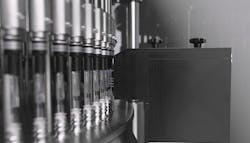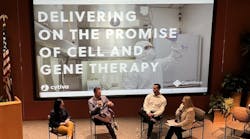The U.S. Food and Drug Administration recognized the seriousness of drug shortages way back in 1999 when they established the drug shortage program to track and attempt to oversee resolutions for the concerning amount of drugs that were becoming unavailable to hospitals and patients. But in late 2009, the problem started getting worse, and by 2011, drug shortages rose to what health agencies called “crisis level,” with 251 medically necessary drugs affected.
But there was a pattern. Almost 75% of these 251 drugs in shortage were sterile injectable products. So, what was going on and what could drug manufacturers do to fix it? The reasons behind drug shortages are of course, varied and complex and in truth, not all of the issues are within drugmakers’ control – things like raw materials shortages or global pandemics, for example.
But among the many factors that contribute to drug shortages, especially when it comes to shortages of sterile injectables, quality and manufacturing issues are the most pervasive. Specifically, syringe inspection has been an historically challenging endeavor. Due to syringes’ varying shapes and sizes – and the variety of drugs which they contain – their inspection must account for a broad array of complex parameters to find techniques that marry accuracy with efficiency.
To better understand the issue, Pharma Manufacturing sat down with Andrea Sardella, PhD, pharma inspection product development manager for Stevanato Group. Sardella, a nuclear engineer who began his career in research and then moved to the industrial sector, has a unique perspective on new automation and inspection products available to the pharma industry.
Q: Why are prefilled syringes so complicated to inspect?
A: As we’re currently seeing with the largest vaccination effort in human history, the challenges posed by syringe inspection become especially relevant when considering the ever-growing adoption of injectable drugs. This leads to a need for sophisticated inspection systems to help manufacturers combat not only the COVID-19 pandemic but various other maladies.
Syringes are among the most difficult containers to inspect. Among other obstacles, syringes require handling protocols completely separate from other primary packaging types, and their unique, widely varying shapes and sizes require customized, multi-area inspection. This presents impediments both to per-item accuracy and overall production speeds.
While other containers such as vials, cartridges, and ampoules largely “stand still” and can therefore enter the inspection process independently, syringes typically are carried via conveyor and then turned upside-down. To inspect syringes accurately and efficiently, they usually must be rotated with the head pointed upward, so that any hidden particles in the funnel can sink down into the liquid for increased inspection detectability.
If the syringes are pre-sterilized, this generally means the containers are in a “nest & tub” arrangement, which requires they be denested by a robotic unit communicating with the inspection machine. This intricate process requires gentle handling and avoids glass-to-glass contact to mitigate the likelihood of cracks or breakage.
Q: What techniques are commonly used to overcome these obstacles?
A: First, solving for handling is key – so let’s address that before getting into the actual content and container inspection. Syringes are typically handled by holding them on the upper and lower part with customized cups, or below the plunger by a two-finger adaptive gripper. They are then inverted, and their various parts inspected before being reinverted. This method of holding syringes by both upper and lower portions brings the advantage of allowing higher rotation speeds.
When using grippers, syringes are held under their plungers, rotated head-up for inspection, then inverted again. Gripper systems typically operate at slower speeds, but are well suited for more delicate closure systems such as luer-lock cone. This is because grippers don’t touch the mechanism, and therefore present lower risks of affecting the closure integrity.
Q. What about the inspection process itself?
A. The multi-component nature of syringes makes inspection complex. Among the more challenging parts is the flange, because they are typically not exactly flat. This factor frequently foments deceptive shadows and reflections, both of which make it more difficult for inspection stations to determine whether the glass is scratched or otherwise damaged. The solution typically lies in employing appropriate optical and illumination setups to minimize false rejects, in conjunction with more advanced image processing functions that take advantage of the more sophisticated layout.
The plunger can be a problem for similar reasons. At Stevanato Group, we have developed a dual control system technique, which allows for analysis of two spatially coherent views in one image — without the need to duplicate inspection stations. Angled views tasked with inspecting plunger tops are combined with a frontal view monitoring the plunger top’s lateral section.
Syringes’ comparably small diameters also present an inspection challenge, because of the limited space in which particles can move and therefore be detected. To inspect an injectable drug, the particles in the formulation need to be made to move – which can require rotation of up to 9000 RPMs. However, some containers can’t be rotated at high speeds for stability reasons. For example, subjecting many biotech drugs to such turbulence could impact their integrity. Also, with highly viscous drugs, particles generally don’t move and therefore cannot be distinguished via movement methods.
In these scenarios, the answer often lies in three-dimensional inspection, which allows a module to infer whether a suspected contaminant is inside or outside the container by analyzing its trajectory. Basically, the radius will be shorter if the foreign matter is inside, and longer if it is outside.
Q. What does an overall best-practices approach to syringe inspection look like?
A. Lighting, rotation speed, and inspection technologies are the key elements to consider when inspecting syringes. From there, the next step becomes properly mixing and matching these elements to suit various syringe types and drug features.
To build any overarching best practices approach, the prerequisites must be met – and in syringe inspection, adequate lighting is essential for identifying anomalies within liquid drugs. Light intensity should be sufficient for illuminating the container while providing a moving contrast to identify the smallest particles. Reliable detection must combine the advantages of various lighting methods to detect the widest range of contaminants, as different contaminants react to light in different ways.
Another technique is using line-scan cameras, which are especially effective when inspecting turbid liquids. Line-scan cameras continuously capture images line by line, then stitch together a comprehensive image from upwards of 10,000 exposures. By rotating the container at high speeds, the particles move toward the container barrel. Line scans are fast and accurate with very few false rejects, and are ideal for inspecting cylindrical surfaces – especially when performing cosmetic lateral side inspection, since there are no distortions.
Against this backdrop of per-product injectables inspection customization, pharma companies are increasingly seeking solutions to handle different containers – syringes, vials and cartridges – on the same machine. This “one platform fits all” mentality is already impacting the way machinery engineers design equipment, as versatility and flexibility become mission-critical machine attributes. The onus is on equipment developers that deliver an exceptionally broad array of functionalities without sacrificing precision for capabilities breadth or production speed.






